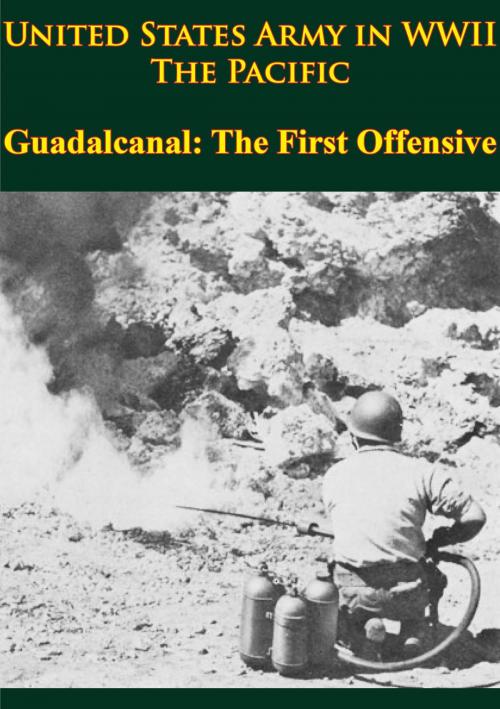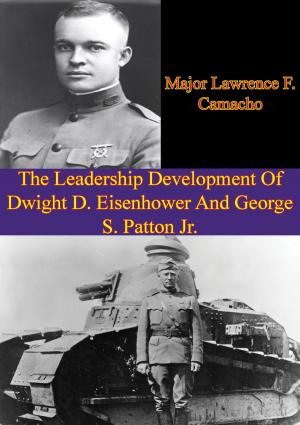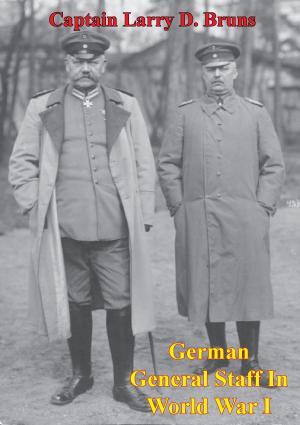United States Army In WWII - The Pacific - Guadalcanal: The First Offensive
[Illustrated Edition]
Nonfiction, History, Germany, European General, Military, United States| Author: | Samuel Milner | ISBN: | 9781782893998 |
| Publisher: | Verdun Press | Publication: | August 15, 2014 |
| Imprint: | Verdun Press | Language: | English |
| Author: | Samuel Milner |
| ISBN: | 9781782893998 |
| Publisher: | Verdun Press |
| Publication: | August 15, 2014 |
| Imprint: | Verdun Press |
| Language: | English |
[Includes 3 charts, 36 maps and 107 illustrations]
"The successes of the South Pacific Force," wrote Admiral Halsey in 1944, "were not the achievements of separate services or individuals but the result of whole-hearted subordination of self-interest by all in order that one successful ‘fighting team’ could be created." The history of any South Pacific campaign must deal with this "fighting team," with all United States and Allied services. The victory on Guadalcanal can be understood only by an appreciation of the contribution of each service. No one service won the battle. The most decisive engagement of the campaign was the air and naval Battle of Guadalcanal in mid-November 1942, an engagement in which neither Army nor Marine Corps ground troops took any direct part.
This volume attempts to show the contribution of all services to the first victory on the long road to Tokyo. It does not describe all ground, air, and naval operations in detail but it does attempt, by summary when necessary, to show the relationship between air, ground, and surface forces in modern warfare.
[Includes 3 charts, 36 maps and 107 illustrations]
"The successes of the South Pacific Force," wrote Admiral Halsey in 1944, "were not the achievements of separate services or individuals but the result of whole-hearted subordination of self-interest by all in order that one successful ‘fighting team’ could be created." The history of any South Pacific campaign must deal with this "fighting team," with all United States and Allied services. The victory on Guadalcanal can be understood only by an appreciation of the contribution of each service. No one service won the battle. The most decisive engagement of the campaign was the air and naval Battle of Guadalcanal in mid-November 1942, an engagement in which neither Army nor Marine Corps ground troops took any direct part.
This volume attempts to show the contribution of all services to the first victory on the long road to Tokyo. It does not describe all ground, air, and naval operations in detail but it does attempt, by summary when necessary, to show the relationship between air, ground, and surface forces in modern warfare.




![Cover of the book The Story of Wake Island [Illustrated Edition] by Samuel Milner](https://www.kuoky.com/images/2014/august/300x300/9781782895619-A79x_300x.jpg)
![Cover of the book THE ADMIRALTIES - Operations Of The 1st Cavalry Division 29 February - 18 May 1944 [Illustrated Edition] by Samuel Milner](https://www.kuoky.com/images/2014/august/300x300/9781782894568-Lip5_300x.jpg)

![Cover of the book Marines In World War II - The Guadalcanal Campaign [Illustrated Edition] by Samuel Milner](https://www.kuoky.com/images/2014/august/300x300/9781782892809-WOFP_300x.jpg)
![Cover of the book The Red Knight Of Germany - The Story Of Baron Von Richthofen, Germany’s Great War Bird [Illustrated Edition] by Samuel Milner](https://www.kuoky.com/images/2014/june/300x300/9781782891871-O9ox_300x.jpg)


![Cover of the book Marines In World War II - The Marshalls: Increasing The Tempo [Illustrated Edition] by Samuel Milner](https://www.kuoky.com/images/2014/august/300x300/9781782892816-YiLl_300x.jpg)

![Cover of the book Marines In World War II - Bougainville And The Northern Solomons [Illustrated Edition] by Samuel Milner](https://www.kuoky.com/images/2014/august/300x300/9781782892786-VZXx_300x.jpg)

